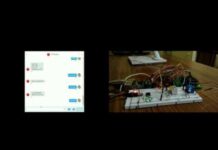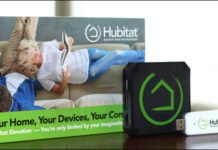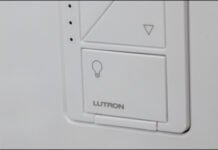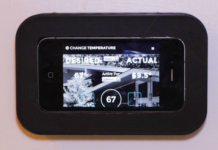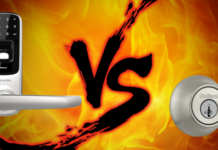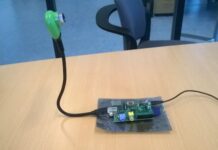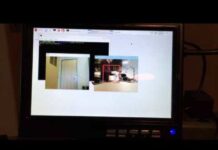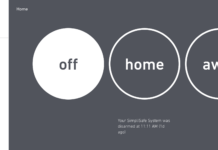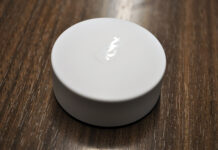Predix puts manufacturing data in the cloud: GE has announced a new product that allows companies with multiple factories to consolidate data from those factories in one location in the cloud. This gives operators a view of their operations as a whole and can help companies assess how effective different plants are. Along with this product announcement, GE says that Procter & Gamble has been using this software and other GE software across its operations to spare operators from entering plant data into multiple different systems. What’s notable here is that GE clearly sees that manufacturing data won’t be all at the edge, but is instead betting on a hybrid strategy. (GE) -Stacey Higginbotham
A giant wireless testbed for IoT and other device makers: Want to test your in-development IoT device with different radio networks? You can buy actual hardware to do that or you can hit up a massive virtual environment created as a test bed. Platforms for Advanced Wireless Research has completed the setup of such a test facility in Salt Lake City. Virtual test environments can simulate individual 4G, 5G, and Wi-Fi networks, or any combination of them. And with a massive, multi-antenna system in place, you can even test hundreds of devices on the same frequency at once. (PAWR) -Kevin Tofel
You’ll have smart home access from nearly anywhere with Project Kuiper: Amazon this week confirmed that it plans to launch 3,236 low-Earth-orbit satellites to provide mobile broadband to 95% of the Earth’s population. While this effort, called Project Kuiper, is meant to offer high-speed broadband, it will be useful to check in on your smart home provided you’re between 56 degrees north and 56 degrees south of the equator. That pretty much covers most habitable places, save for above the southern tip of Greenland and below Cape Horn. Sorry penguins and polar bears: You’ll have to keep track of your own homes. (GeekWire) -Kevin Tofel
Apple’s HomePod gets a permanent price cut to $299: If you’re a Siri fan and have been holding out on a HomePod sale, wait no longer. Normally priced at $349, Apple has permanently reduced the cost by $50. Having used the HomePod with Siri, it’s great if you’re all in on HomeKit, but it’s not a necessary buy. Maybe I’d change my tune if Siri gained some more smarts, Apple offered additional HomeKit devices, or the price dropped by another $50. (9to5 Mac) -Kevin Tofel
Amazon Alexa can check your prescriptions and blood sugar: It’s been a challenge to create digital assistant speaker skills that have access to personal health data, mainly due to privacy laws such as HIPAA. To get around this, Amazon launched a HIPAA-compliant environment specifically for health-related skills this week. Among the first partners are Express Scripts, so you can check the status of prescription refills by voice, and Livongo, which allows diabetics to ask Alexa what their most recent blood sugar reading is. (Amazon Developer Blog) -Kevin Tofel
A good tip sheet for parents with an Alexa: It’s tough being a parent. There are a million tiny details that you have to monitor along with those tiny people. You also have a lot of hands-on time with kids and their stuff that can make it difficult to pick up a phone to take a note or check a fact. That’s why I found this guide to using Alexa to make parenting easier so nice. It covers basics all the way to how to create a bedtime routine. (WSJ) -Stacey Higginbotham
You don’t need a Pixel phone to have Google Assistant book a reservation: After initially launching its Google Duplex feature on its own Pixel devices, Google is bringing Duplex to non-Pixel phones such as the Samsung Galaxy S10. If you’re not familiar with it, Duplex will book restaurant reservations for you in a human-sounding voice complete with nuances such as “um” and “yeah.” I’ve used it on the Pixel and it’s actually amazing digital assistant technology. Watch for a widespread rollout in the coming weeks to a range of Android phones as well as iOS devices. (XDA-Developers) -Kevin Tofel
Wayve cars drive autonomously without LiDAR and other sensors: Color me skeptical on this one, but UK-based startup Wayve says its vehicles only need a GPS and satellite map to safely drive themselves. If the company can deliver on its promise, it could bring the cost of autonomous cars down by quite a bit since they wouldn’t need expensive radar units and other sensors. Wayve claims its secret sauce is an AI it developed to navigate roads with fewer inputs. Wayve currently uses inexpensive cameras to see its surroundings and “learns” over time through drivers occasionally taking the wheel. I think I’ll take a cab, thank you. There are definitely some drivers that shouldn’t be teaching cars their bad habits. (TechCrunch) -Kevin Tofel
The next Google Home may be a hub and a mesh access point: I was nosing through some code in the public part of Google’s repository this week and found a new device dubbed “Mistral” in the works. Mistral will use the new Qualcomm QSC400 chips for improved audio quality, on-device voice recognition with up to four microphones, mesh Wi-Fi and Bluetooth, as well as ZigBee radio capabilities. Why have a hub, an access point, and a digital assistant speaker when you can have all three in one device? (StaceyOnIoT) -Kevin Tofel
A good discussion on digital snake oil: As we start putting data in action in the health and wellness space, I’m frustrated by the lack of testing and peer review many of these products have. While Apple is working with the FDA and doctors to make sure it’s Apple Watch can accurately detect certain heart conditions, many companies are not so diligent. Instead, they throw out correlations without causation and make definitive claims where there aren’t any. I call this digital snake oil. This article covers how companies are trying to sell digital snake oil with allergen detection sensors, and it’s a really good example of the skepticism we should have around these products. (The Verge) -Stacey Higginbotham
The post IoT news of the week for April 5, 2019 appeared first on Stacey on IoT | Internet of Things news and analysis.




